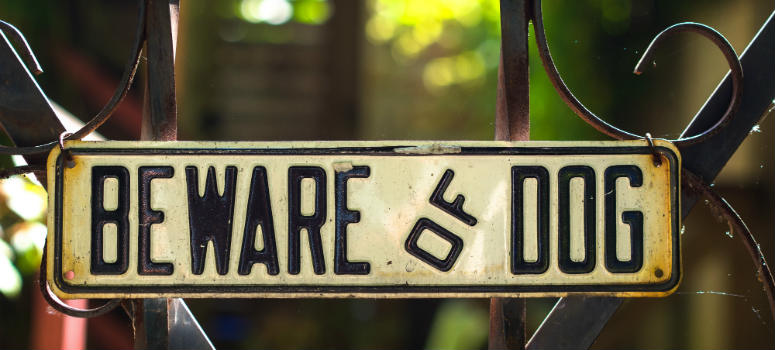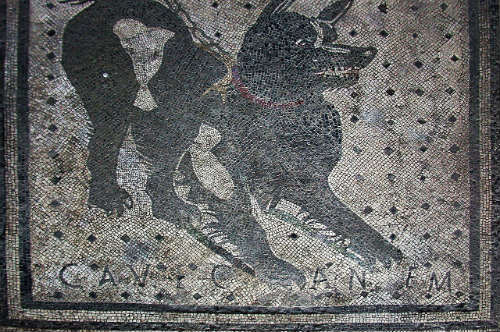Cave Canem—Beware of the Dog.
This phrase is well known in modern day— but it was just as common in the ancient world. In fact, the earliest known use of this phrase is found in The Satyricon, a Roman work of fiction.
The Book of Satyrlike Adventures (the translated name) is a book of—you guessed it—satyr. But ancient satyr! Which is kinda great (dog walking New York).
The phrase itself comes into the book during a scene where “the author and his friend Ascyltos slip away and go adventuring” in the large and luxurious home of Trimalchio. It reads:
For on the left hand as you went in, not far from the porter’s office, a great dog on a chain was painted on the wall, and over him was written in large letters “Beware of the dog.” My friends laughed at me, But I plucked up courage and went on to examine the whole wall. “The Satyricon – “Beware Of The Dog”” Magill’s Quotations in Context Ed. Frank N. Magill. eNotes.com, Inc. 1965 eNotes.com 29 Feb, 2016
And believe it or not, the ancient Beware of Dog signs really were displayed in the impressive way described.
In the ancient world, and even today, the threshold is important to giving the right first impression. Large rooms with tiled mosaics were designed to impress and awe! And in the case of ancient Pompeiian homes—warn guests (or intruders) about the family pooch. Historically, Beware of Dog signs have been used as both a warning of viciousness and a way to say, “Watch your step!” Smaller dogs could easily be forgotten, and run beneath a foot or a chair-bound-butt. In the case of Pompeii, we see very glorious and ferocious looking mosaics of dogs—both as flooring and as decoration on the wall. Perhaps they were trying to keep people out more than amaze them with the delicate and gorgeous mosaic work. Either way, the first impression of the home must have been one that really left an impression!
Here are some a couple examples of ancient Cave Canem from the aristocratic homes of old!





